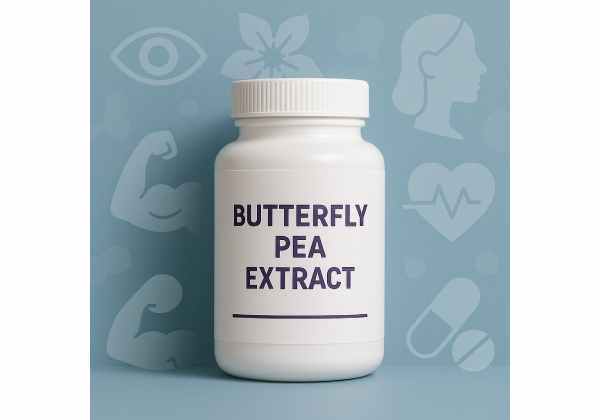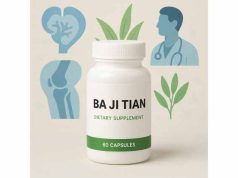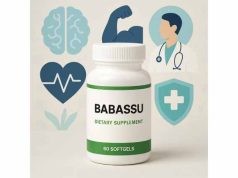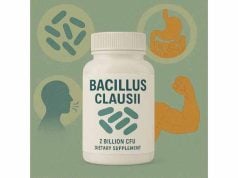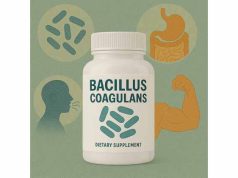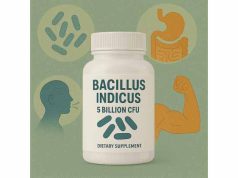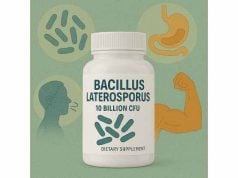Butterfly pea extract, derived from the vibrant blue petals of Clitoria ternatea, has quickly gained popularity among wellness seekers for its striking color and potent natural benefits. Known for its use in herbal teas, natural food coloring, and traditional Ayurvedic medicine, this botanical extract is now being recognized for its antioxidant, cognitive-enhancing, and adaptogenic properties. Butterfly pea extract is used for everything from promoting healthy skin and hair to supporting brain health, improving mood, and even reducing inflammation. In this comprehensive guide, we’ll explore the science, practical uses, optimal dosages, and safety profile—helping you decide if butterfly pea extract deserves a place in your wellness routine.
Key Takeaways
- Butterfly pea extract offers powerful antioxidant and anti-inflammatory effects, supporting overall cellular health.
- Widely used for enhancing cognitive function, reducing stress, and promoting calmness thanks to its adaptogenic properties.
- Popular in beverages and recipes for its vivid blue color, making it a natural, chemical-free food dye.
- Generally safe for most users when consumed in moderation, but certain people should exercise caution.
- Emerging research suggests butterfly pea may support skin, hair, and metabolic wellness, though more studies are needed for definitive claims.
Table of Contents
- What Is Butterfly Pea Extract? Overview, Benefits, and Common Uses
- Biological Effects and Scientific Mechanisms of Butterfly Pea Extract
- Evidence-Backed Benefits and Popular Uses of Butterfly Pea Extract
- Safety, Tolerability, Side Effects, and Interactions of Butterfly Pea Extract
- Optimal Dosage, Usage, and Administration of Butterfly Pea Extract
- Butterfly Pea Extract: Frequently Asked Questions (FAQ)
What Is Butterfly Pea Extract? Overview, Benefits, and Common Uses
Butterfly pea extract is derived from the flowers of Clitoria ternatea, a plant native to Southeast Asia, widely celebrated for its brilliant, naturally blue petals. This unique botanical has a long history of use in both traditional Ayurvedic and folk medicine, where it has been valued for its perceived health-promoting and mood-lifting effects. Today, butterfly pea extract is most commonly encountered in the form of herbal teas, tinctures, capsules, powders, and as a natural food coloring—instantly recognizable for its intense, sapphire-blue hue that can turn purple with a squeeze of lemon due to changes in pH.
Key Characteristics and Components
The extract contains a rich blend of bioactive compounds, including anthocyanins (particularly ternatins), flavonoids, and triterpenoids. These phytochemicals are responsible not only for the flower’s distinctive color but also its antioxidant activity and various biological effects. Unlike many other botanicals, butterfly pea is caffeine-free, making it an excellent option for those seeking functional beverages or supplements without added stimulants.
Traditional and Modern Uses
Historically, butterfly pea has been brewed as a tea believed to calm the mind, enhance memory, and support longevity. In many Southeast Asian countries, the extract or petals are used to dye rice, desserts, and drinks for festive occasions. The rise of wellness culture and “superfood” trends has only accelerated butterfly pea’s global popularity, particularly as people seek out colorful, Instagram-worthy foods that offer genuine functional benefits.
Today, common uses for butterfly pea extract include:
- Herbal teas and lattes: Sipped for relaxation, cognitive support, and stress relief.
- Natural food and beverage coloring: Used in smoothies, cocktails, desserts, and rice dishes for dramatic color with no synthetic dyes.
- Hair and skin products: Included in some shampoos, conditioners, and creams for its antioxidant and purported strengthening effects.
- Supplements: Found in capsule, powder, and tincture form, often combined with other adaptogens or nootropics.
Consumer Trends and Market Growth
As plant-based and wellness-focused products gain momentum, butterfly pea extract stands out for its versatility, vivid appearance, and emerging scientific support. Its adoption has expanded beyond culinary applications into beauty, functional foods, and even sports nutrition. Both holistic practitioners and health-conscious consumers are intrigued by its adaptogenic potential—the ability to help the body adapt to stress—along with claims related to brain health and anti-aging.
However, it’s important to separate traditional uses and social media hype from substantiated evidence. Modern research is beginning to confirm several of the traditional claims, particularly in the areas of antioxidant protection, anti-inflammatory effects, and cognitive support. Understanding the mechanisms behind these effects, and how best to incorporate butterfly pea extract into your routine, requires a closer look at its biological actions and the current state of scientific knowledge.
Biological Effects and Scientific Mechanisms of Butterfly Pea Extract
To fully appreciate the growing excitement around butterfly pea extract, it helps to explore its biological actions and the scientific principles behind its effects. This vibrant blue flower is much more than a natural dye—its compounds interact with the body in fascinating ways that may explain its potential as a wellness enhancer.
Anthocyanins and Flavonoids: Nature’s Antioxidant Powerhouses
The brilliant color of butterfly pea extract comes from its anthocyanins, especially a group called ternatins. Anthocyanins are a type of flavonoid, plant-based compounds that act as powerful antioxidants in the body. Antioxidants are crucial for neutralizing free radicals—unstable molecules that, in excess, can damage cells and accelerate aging, inflammation, and chronic diseases. The antioxidant activity of butterfly pea has been measured in lab studies, showing comparable or even superior free radical scavenging abilities when compared to some well-known superfoods.
Flavonoids in butterfly pea may also help:
- Reduce oxidative stress in cells and tissues
- Support healthy inflammatory responses
- Protect against environmental toxins and pollution
- Contribute to skin health and UV protection
Nootropic and Neuroprotective Mechanisms
Butterfly pea extract is sometimes described as a nootropic—a substance that supports cognitive function. This reputation arises from animal and in vitro studies suggesting that compounds in the flower can boost levels of certain neurotransmitters, especially acetylcholine, which is vital for learning and memory. There is also evidence to suggest that butterfly pea extract may inhibit the activity of acetylcholinesterase, the enzyme that breaks down acetylcholine, thereby increasing its availability in the brain.
Additionally, butterfly pea’s antioxidant activity helps to protect neurons from oxidative stress, a contributor to age-related cognitive decline. Some research hints that its adaptogenic action may help regulate the body’s response to stress, potentially enhancing mood and supporting emotional balance.
Anti-Inflammatory and Adaptogenic Pathways
Inflammation is a double-edged sword in human health: necessary for defense against pathogens, but harmful when chronic or excessive. Butterfly pea extract appears to help modulate inflammatory pathways, suppressing the release of pro-inflammatory cytokines (chemical messengers). This may translate to benefits for joint comfort, skin health, and general well-being.
As an adaptogen, butterfly pea extract is thought to support the body’s resilience to physical, emotional, and environmental stress. While the exact molecular mechanisms are still being unraveled, early data points to modulation of stress hormones and balancing of nervous system activity.
Metabolic, Dermatological, and Other Effects
Recent studies are investigating the potential of butterfly pea extract to:
- Support healthy blood sugar balance by influencing glucose uptake and insulin sensitivity
- Enhance skin and hair vitality through antioxidant protection and possible stimulation of collagen synthesis
- Inhibit the formation of advanced glycation end-products (AGEs), which contribute to visible aging and cellular dysfunction
- Act as a natural antimicrobial, potentially supporting oral health and gut balance
Synergy with Other Botanicals
It’s increasingly common to find butterfly pea paired with other herbal adaptogens, nootropics, or superfoods, as its mechanisms may complement those of ashwagandha, lion’s mane, turmeric, or green tea. This synergy can enhance overall wellness effects, cognitive support, or stress relief in multifunctional formulations.
Limitations and Ongoing Research
While laboratory and animal studies are promising, clinical research in humans is still in its early stages. Most available data comes from in vitro or preclinical studies, so it’s wise to approach health claims with reasonable caution until larger, peer-reviewed trials are published.
Still, the unique blend of antioxidants, potential nootropic activity, anti-inflammatory effects, and adaptogenic benefits gives butterfly pea extract an impressive profile among natural wellness ingredients.
Evidence-Backed Benefits and Popular Uses of Butterfly Pea Extract
Butterfly pea extract’s reputation as a superfood and natural supplement is rooted in both traditional practice and emerging science. While more human research is needed, here’s a closer look at the most compelling, evidence-supported benefits and real-world uses that have contributed to its growing global popularity.
1. Potent Antioxidant Protection
Among butterfly pea’s most valuable assets is its concentration of antioxidants—particularly anthocyanins and flavonoids. These compounds:
- Protect cells from oxidative stress, which is linked to aging, inflammation, and a host of chronic diseases
- Support skin health by minimizing damage from UV rays and pollution
- May help slow the appearance of wrinkles, dark spots, and other signs of premature aging
Users often report a visible glow to their skin after regular use, and some cosmetic products now include butterfly pea for this reason.
2. Cognitive Support and Memory Enhancement
Butterfly pea is increasingly marketed as a nootropic. Animal and laboratory studies suggest it may:
- Improve memory, learning, and information retention by supporting acetylcholine levels
- Provide neuroprotection against oxidative stress in brain cells
- Potentially help defend against cognitive decline associated with aging
Although human trials are limited, some users describe better focus, clearer thinking, and enhanced productivity when adding butterfly pea to their daily routine.
3. Stress Relief and Adaptogenic Balance
One of butterfly pea’s most sought-after effects is its calming, adaptogenic influence. By supporting the body’s stress-response system, it may:
- Promote feelings of relaxation and well-being
- Reduce occasional anxiety or tension without drowsiness
- Help support restful sleep when enjoyed as a soothing evening tea
These effects make butterfly pea a popular natural option for individuals navigating busy lifestyles, high-pressure jobs, or challenging academic environments.
4. Support for Healthy Skin and Hair
The antioxidants and flavonoids in butterfly pea can benefit skin and hair by:
- Defending against environmental aggressors that cause damage and aging
- Supporting collagen production and elasticity for youthful skin
- Contributing to scalp and follicle health, potentially reducing hair fall or brittleness
In Ayurveda and Thai traditional medicine, butterfly pea has long been used in topical preparations to enhance hair strength and shine.
5. Natural Food Coloring and Culinary Innovation
Thanks to its vibrant hue and safety profile, butterfly pea extract is a favorite among culinary professionals and home cooks alike. Its applications include:
- Colorful teas, lattes, and cocktails (that change color with pH adjustment)
- Bright blue or purple rice, noodles, and baked goods
- Natural dye for frostings, ice creams, jellies, and more
Importantly, unlike synthetic dyes, butterfly pea extract delivers color with the added bonus of antioxidants and no artificial chemicals.
6. Metabolic and Blood Sugar Support (Emerging Evidence)
Preliminary research indicates butterfly pea may help:
- Modulate post-meal blood sugar spikes
- Support insulin sensitivity and healthy carbohydrate metabolism
While not a replacement for medical treatment, these effects may make butterfly pea a valuable addition to wellness strategies focused on metabolic health.
7. Gut, Oral, and Immune Health
Some studies show butterfly pea extract has mild antimicrobial properties. Early findings suggest it may:
- Inhibit certain bacteria associated with oral health concerns
- Help maintain a healthy gut microbiome when consumed regularly
More research is needed, but these benefits point to butterfly pea’s potential as a functional ingredient for whole-body wellness.
8. Popular in Adaptogenic and Functional Beverages
In the rapidly expanding world of adaptogenic drinks and functional foods, butterfly pea is prized for:
- Its unique sensory appeal (color, aroma, mild earthy flavor)
- Its synergy with other botanicals for mood, stress, or cognitive support
- Suitability for both caffeine-free and energizing blends
Whether sipped as a pure tea, blended into lattes, or mixed into wellness tonics, butterfly pea’s flexibility is unmatched among botanical extracts.
Who Should Consider Butterfly Pea Extract?
- Individuals seeking natural stress relief or cognitive enhancement
- Wellness enthusiasts looking to add color and antioxidants to their diet
- People sensitive to caffeine or artificial additives
- Anyone interested in plant-based beauty or culinary creativity
As always, results can vary, and individual responses depend on genetics, health status, and other supplements or medications.
Safety, Tolerability, Side Effects, and Interactions of Butterfly Pea Extract
When it comes to adding any new supplement to your wellness routine, understanding the safety profile is essential. Butterfly pea extract is generally recognized as safe for most individuals, particularly when consumed in the amounts typically found in foods and beverages. However, as with any herbal product, some precautions, potential side effects, and interactions should be considered—especially for those with unique health needs or who are taking other medications.
General Safety and Tolerability
Butterfly pea extract has a long history of use in Southeast Asian cuisines and traditional medicine, and reported adverse effects are rare. For most people, drinking butterfly pea tea or using it as a food dye in moderate quantities is well tolerated. Research suggests that the plant’s natural compounds are not toxic in standard dietary doses, and the risk of allergic reaction is considered very low.
Nevertheless, here are some key points regarding its tolerability:
- Digestive Comfort: In high doses, some users report mild gastrointestinal symptoms such as nausea or stomach upset. These effects are uncommon and typically resolve on their own.
- Pregnancy and Breastfeeding: There is insufficient scientific evidence regarding the safety of butterfly pea extract during pregnancy or lactation. While occasional culinary use is likely safe, women who are pregnant or breastfeeding should consult their healthcare provider before using concentrated supplements.
- Children: Culinary use in small amounts (e.g., colored rice or beverages) is generally considered safe for children, but concentrated extracts should only be used under medical supervision.
Potential Side Effects
Most side effects are rare, mild, and reversible, but it’s important to be aware of the following:
- Gastrointestinal discomfort: Nausea, flatulence, or mild diarrhea, especially if large amounts are consumed.
- Headache: Occasional headache has been reported in sensitive individuals, particularly when combining butterfly pea with other adaptogenic or nootropic herbs.
- Potential Hypotension: Early research suggests butterfly pea extract may mildly lower blood pressure. For individuals with low blood pressure or those taking antihypertensive medications, caution is advised.
Possible Interactions
While interactions are uncommon, the following considerations apply:
- Blood Sugar Medications: Because some studies suggest butterfly pea extract can help modulate blood sugar levels, individuals on diabetes medications should monitor their levels closely and consult with a healthcare provider to avoid potential hypoglycemia (low blood sugar).
- Blood Pressure Medications: As noted, butterfly pea may have a slight blood pressure-lowering effect. Those on antihypertensive drugs should monitor for possible additive effects.
- Anticoagulant/Antiplatelet Drugs: There is no robust evidence of butterfly pea causing bleeding issues, but because it contains flavonoids, some practitioners advise caution if combined with blood-thinning medications.
Allergic Reactions and Sensitivities
Butterfly pea is not known as a common allergen. However, those with known sensitivities to legumes or members of the Fabaceae family (which includes peas, beans, and peanuts) may wish to start with a very small amount to check for any reaction.
Special Populations
- Pregnant and breastfeeding women: As mentioned, concentrated extracts are best avoided without professional advice.
- Individuals with chronic medical conditions: Anyone with a diagnosed health condition or who takes prescription medication should consult their doctor or pharmacist before using butterfly pea extract supplements.
Quality, Purity, and Adulteration
Another key safety factor is the quality of the product you choose. Because the dietary supplement industry is not universally regulated, opt for brands that provide third-party testing, clear labeling, and traceable sourcing. This reduces the risk of adulterants, contaminants, or mislabeled products that could cause adverse reactions.
Summary and Recommendations
- Butterfly pea extract is very safe for most people when used in culinary or supplement doses.
- Side effects are rare and generally mild; start with low doses to assess tolerance.
- Consult a healthcare professional before use if you are pregnant, breastfeeding, on medication, or have a medical condition.
- Prioritize high-quality, reputable brands for best results and safety.
Optimal Dosage, Usage, and Administration of Butterfly Pea Extract
Determining the ideal dosage and administration method for butterfly pea extract depends on your intended use—whether culinary, supplemental, or cosmetic. While there’s no universally established daily requirement, emerging guidelines and traditional practice offer helpful starting points.
Common Forms and How to Use Them
Butterfly pea extract is widely available as:
- Dried flowers: Used for brewing teas or infusing into water, cocktails, and desserts.
- Liquid extract/tincture: Concentrated form for easy addition to drinks or direct supplementation.
- Powdered extract: Convenient for blending into smoothies, lattes, baked goods, or homemade skincare products.
- Capsules/tablets: Standardized doses for supplement users seeking cognitive, antioxidant, or adaptogenic effects.
Recommended Dosage Ranges
- For tea and culinary uses: Steep 1–2 teaspoons (about 2–3 grams) of dried flowers in hot water for 3–5 minutes. For more intense color or flavor, increase the quantity slightly.
- Powdered extract: 300–500 mg daily is a typical range for general wellness. For cognitive or adaptogenic effects, some products recommend up to 1,000 mg, divided into two doses.
- Liquid extract/tincture: Commonly, 1–2 dropperfuls (approx. 1–2 mL) per day, either taken directly or mixed with drinks. Always follow the specific instructions provided by the manufacturer.
- Capsules/tablets: Dosage varies by brand but typically falls between 250–500 mg per serving. Follow label instructions and do not exceed recommended amounts.
Best Practices for Maximum Benefits
- Timing: Butterfly pea extract can be consumed at any time, but many people prefer it in the afternoon or evening to promote calm and relaxation. If using for cognitive support, morning or early afternoon may be best.
- Combining with Other Ingredients: Butterfly pea pairs well with lemon (which turns it purple due to pH changes), honey, ginger, mint, and other herbs. For enhanced adaptogenic effects, try it in blends with ashwagandha or tulsi.
- Storage: Store dried flowers and powdered extract in a cool, dry place away from sunlight to preserve color and potency.
Tips for Culinary and Topical Use
- Use butterfly pea tea as a base for colorful lattes, lemonades, or cocktails.
- Sprinkle powdered extract into yogurt, smoothie bowls, or baked goods.
- For skin and hair, mix a small amount of powdered extract with your favorite cream, mask, or shampoo.
Dosage for Specific Goals
- Cognitive support: 500–1,000 mg of standardized extract per day, ideally in divided doses.
- Stress relief and adaptogenic effects: 300–500 mg daily, either as tea or capsule.
- Skin and hair health: Topical use is best complemented by oral intake for whole-body benefits.
When to Adjust or Avoid
- If you notice digestive upset or mild side effects, reduce your dose or take with food.
- If you’re pregnant, breastfeeding, or taking medication, consult your healthcare provider before use.
- Children and elderly individuals should use butterfly pea in food-grade amounts unless otherwise directed by a health professional.
How Long to Use Butterfly Pea Extract
Butterfly pea is generally safe for regular, ongoing use. Many people incorporate it daily as a beverage or supplement for several months at a time. For specific health goals, cycles of 4–8 weeks followed by a short break are common practice.
Summary Table
| Use Case | Form | Dosage Range | Frequency |
|---|---|---|---|
| General Wellness | Tea/Powder | 2–3g dried / 300–500mg | 1–2x daily |
| Cognitive Support | Powder/Capsule | 500–1,000mg | 1–2x daily |
| Culinary Coloring | Tea/Powder | As needed | Per recipe |
| Skin/Hair Health | Powder/Topical | 1–2g / as needed | As needed |
Always listen to your body and adjust usage accordingly. Choose reputable brands, and check for purity and standardized dosing to ensure the best results.
Butterfly Pea Extract: Frequently Asked Questions (FAQ)
What is butterfly pea extract used for?
Butterfly pea extract is primarily used to support cognitive function, reduce stress, and provide antioxidant protection. It’s also a natural food coloring for drinks and dishes, and is gaining popularity in skincare and haircare products.
Is butterfly pea extract safe to consume every day?
Yes, butterfly pea extract is generally safe for daily use in moderate amounts, especially when consumed as a tea or food ingredient. However, those with medical conditions or taking medication should consult a healthcare professional before regular supplementation.
Does butterfly pea extract really improve memory and focus?
Emerging research and traditional use suggest butterfly pea extract may enhance memory and cognitive performance by supporting neurotransmitter levels and reducing oxidative stress. While animal and lab studies are promising, more human research is needed for definitive claims.
Can butterfly pea extract be used while pregnant or breastfeeding?
Culinary use in small amounts is likely safe, but concentrated butterfly pea extract supplements should be avoided during pregnancy or breastfeeding unless approved by a healthcare provider, due to insufficient safety research.
How do you make butterfly pea flower tea at home?
Steep 1–2 teaspoons of dried butterfly pea flowers in hot water for 3–5 minutes. Strain and enjoy as is, or add lemon juice to turn the tea purple. It can be served hot or cold.
Are there any side effects or drug interactions with butterfly pea extract?
Side effects are rare and mild, including possible stomach upset or headache. Those taking blood sugar or blood pressure medications should monitor closely, as butterfly pea may have additive effects. Always consult your doctor before combining with prescription drugs.
What gives butterfly pea extract its blue color?
Butterfly pea extract’s intense blue color comes from natural compounds called anthocyanins—specifically, ternatins—which are potent antioxidants found in the flower’s petals.
Disclaimer:
This article is for informational and educational purposes only. The content is not intended as a substitute for professional medical advice, diagnosis, or treatment. Always consult a qualified healthcare provider before making decisions about supplements, especially if you have a medical condition, are pregnant or breastfeeding, or take prescription medications.
If you found this guide helpful, please share it with your friends and followers on Facebook, X (Twitter), or your favorite platform—and don’t forget to follow us for more trusted, evidence-based health content. Your support helps us continue providing high-quality wellness resources for everyone!

